AZ-801 Microsoft Configuring Windows Server Hybrid Advanced Services Free Practice Exam Questions (2025 Updated)
Prepare effectively for your Microsoft AZ-801 Configuring Windows Server Hybrid Advanced Services certification with our extensive collection of free, high-quality practice questions. Each question is designed to mirror the actual exam format and objectives, complete with comprehensive answers and detailed explanations. Our materials are regularly updated for 2025, ensuring you have the most current resources to build confidence and succeed on your first attempt.
You need to meet technical requirements for Share1.
What should you use?
You are evaluating the technical requirements tor Cluster2.
What is the minimum number of Azure Site Recovery Providers that you should install?
You need to meet the technical requirements for User1.
To which group in contoso.com should you add User1?
For each of the following statements, select Yes if the statement is true. Otherwise, select No.
NOTE: Each correct selection is worth one point.

You need to configure BitLocker on Server4.
On which volumes can you turn on BitLocker, and on which volumes can you turn on auto-unlock? To answer, select the appropriate options in the answer area.
NOTE: Each correct selection is worth one point.
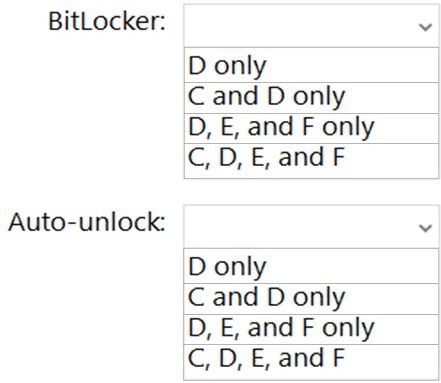
What is the effective minimum password length for User1 and Admin1? To answer, select the appropriate options in the answer area.
NOTE: Each correct selection is worth one point.
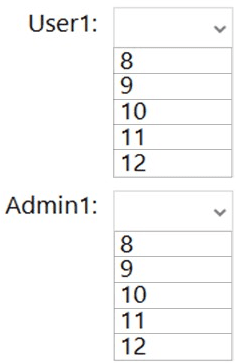
You need to back up Server 4 to meet the technical requirements.
What should you do first?
You need to meet the technical requirements for Cluster3.
What should you include in the solution?
With which servers can Server1 and Server3 communicate? To answer, select the appropriate options in the answer area.
NOTE: Each correct selection is worth one point.
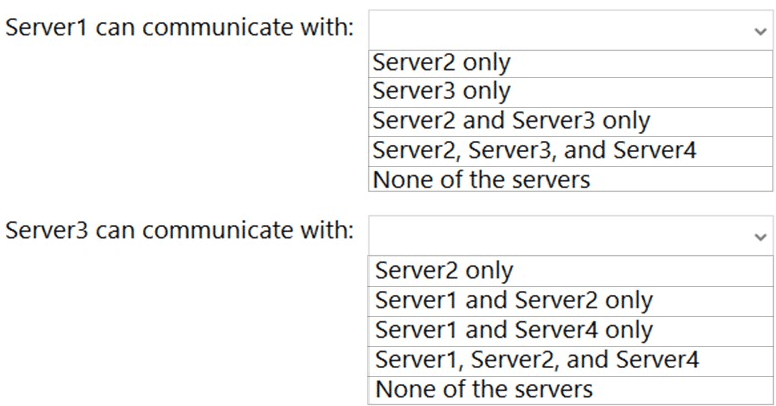
You need to implement alerts for the domain controllers. The solution must meet the technical requirements.
What should you do on the domain controllers, and what should you create on Azure? To answer, select the appropriate options in the answer area.
NOTE: Each correct selection is worth one point.

Which domain controller should be online to meet the technical requirements for DC4?
You are planning the www.fabrikam.com website migration to support the Azure migration plan.
How should you configure WebApp1? To answer, select the appropriate options in the answer area.
NOTE: Each correct selection is worth one point.

You are planning the deployment of Microsoft Sentinel.
Which type of Microsoft Sentinel data connector should you use to meet the security requirements?
You are planning the implementation of Cluster2 to support the on-premises migration plan.
You need to ensure that the disks on Cluster2 meet the security requirements.
In which order should you perform the actions? To answer, move all actions from the list of actions to the answer area and arrange them in the correct order.

You need to implement a security policy solution to authorize the applications. The solution must meet the security requirements.
Which service should you use to enforce the security policy, and what should you use to manage the policy settings? To answer, select the appropriate options in the answer area.
NOTE: Each correct selection is worth one point.
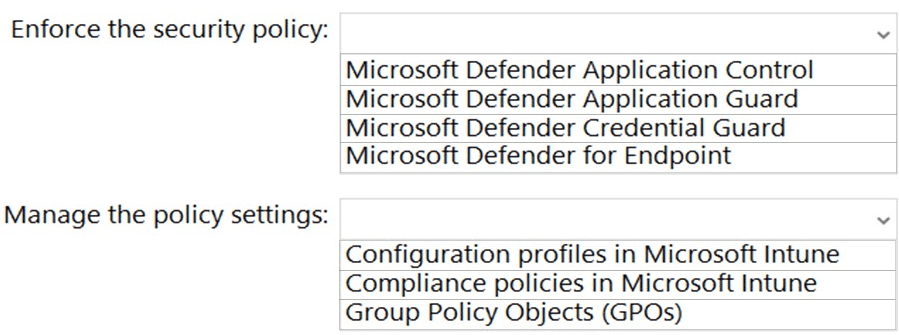
You are remediating the firewall security risks to meet the security requirements.
What should you configure to reduce the risks?
You are planning the migration of APP3 and APP4 to support the Azure migration plan.
What should you do on Cluster1 and in Azure before you perform the migration? To answer, select the appropriate options in the answer area.
NOTE: Each correct selection is worth one point.
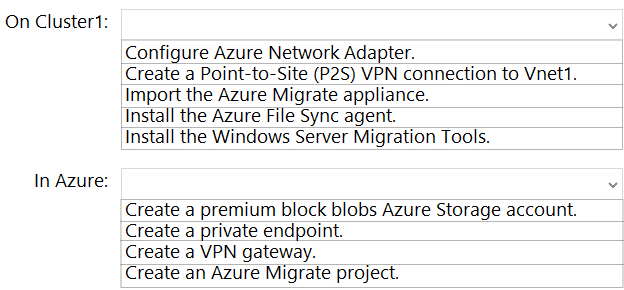
You are planning the data share migration to support the on-premises migration plan.
What should you use to perform the migration?
You are planning the europe.fabrikam.com migration to support the on-premises migration plan-Where should you install the Password Export Server (PES) service, where should you generate the encryption key? To answer, select the appropriate options in the answer area.
NOTE: Each correct selection is worth one point.

You are planning the DHCP1 migration to support the DHCP migration plan.
Which two PowerShell cmdlets should you run on DHCP1, and which two PowerShell cmdlets should you run on DHCP2? To answer, drag the appropriate cmdlets to the correct servers. Each cmdlet may be used once, more than once, or not at all. You may need to drag the split bar between panes or scroll to view content.
NOTE: Each correct selection is worth one point.













